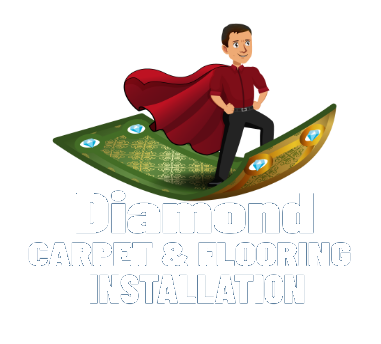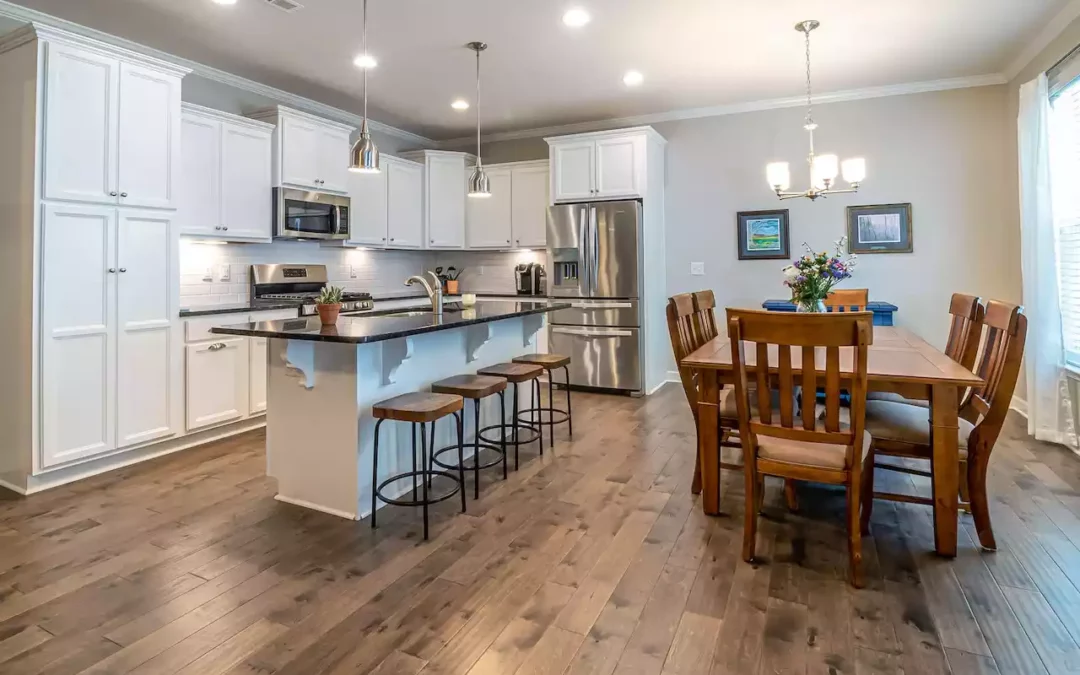Hardwood floors are a popular choice for homeowners due to their timeless beauty and durability. However, proper maintenance is crucial to ensure that they retain their luster and longevity. This comprehensive guide will provide you with all the information you need to know about the maintenance of hardwood floors, from cleaning and protecting to preventing and repairing damage
This guide is your one-stop resource for all things related to maintenance of hardwood floors. From simple cleaning techniques to tackling more challenging issues like scratches and water damage, you’ll find step-by-step instructions and expert tips to help you keep your hardwood floors looking their best. Whether you’re a new homeowner or someone looking to rejuvenate old hardwood floors, this guide has got you covered.
Understanding the Types of Hardwood Floors
When it comes to hardwood floors, there are various types to choose from, each with its own unique characteristics. Understanding these options is essential for proper maintenance of hardwood floors.
1. Solid Hardwood
Solid hardwood floors are made from a single, solid piece of wood. They exude timeless beauty and add warmth to any room. These floors can be sanded and refinished multiple times, allowing for long-term durability. However, solid hardwood is more susceptible to moisture and temperature changes, making it less suitable for humid or moisture-prone areas.
2. Engineered Hardwood
Engineered hardwood, on the other hand, consists of multiple layers of wood veneer pressed together. This construction method makes engineered hardwood more stable and less prone to expansion and contraction caused by humidity and temperature fluctuations. It is a great option for areas like basements, kitchens, or bathrooms. Furthermore, engineered hardwood can be refinished, although not as many times as solid hardwood.
3. Laminate Flooring
Laminate flooring is a cost-effective alternative that mimics the look of hardwood. It is manufactured by layering synthetic materials with a photographic layer that simulates wood grain. While laminate flooring is not actual hardwood, it is highly durable, resistant to scratches and scuffs, and easy to maintain. It is an excellent choice for those on a budget or areas with high foot traffic.
Understanding the differences between these types of hardwood floors will help you make an informed decision that aligns with your preferences and the specific needs of your space.
Preventative Measures for Protecting Hardwood Floors
Keeping your hardwood floors in pristine condition requires proactive efforts to prevent damage. Here are some valuable tips to the maintenance of hardwood floors:
1. Place Floor Mats and Area Rugs
Strategically placing floor mats and area rugs in high-traffic areas, such as entryways and hallways, can help trap dirt, dust, and debris. This reduces the likelihood of scratches caused by abrasive particles that may be tracked in on shoes. Ensure that these mats and rugs have non-slip backings to prevent slips and falls.
2. Use Furniture Pads
When arranging furniture in a room with hardwood floors, use furniture pads underneath the legs and feet. These pads provide a cushioning effect and prevent scratches and dents caused by furniture movement. Be sure to periodically inspect and replace the pads as needed.
3. Clean Spills Immediately
Accidents happen, and spills are no exception. However, it is crucial to clean up any spills promptly for the maintenance of hardwood floors. Moisture can seep into the wood and cause warping or staining. Use a soft cloth or paper towel to blot the spill, and avoid using excessive water or harsh cleaning chemicals.
By taking these preventative measures for the maintenance of hardwood floors, you can prolong the life and beauty of your floors, ensuring they remain a stunning focal point in your home.
Cleaning and Regular Maintenance Routine
Keeping your hardwood floors clean and well-maintained is essential for their longevity and appearance. Follow these maintenance of hardwood floors steps to create a regular cleaning routine:
Step 1: Dusting
Before you begin cleaning, it’s important to remove any loose dirt for the proper maintenance of hardwood floors, dust, and pet hair from your hardwood floors. Use a soft-bristle broom or a microfiber dust mop to gently sweep the surface. Avoid using a regular household broom, as it can potentially scratch the wood. For a more thorough clean, you can also use a vacuum cleaner with a brush attachment, making sure not to use excessive force.
Step 2: Choosing the Right Cleaning Agent
While water is generally safe for hardwood floors, excessive moisture can cause damage. Instead of using water alone, consider using a specialized hardwood floor cleaner for the proper maintenance of hardwood floors. Look for products that are specifically designed for hardwood floors and do not contain harsh chemicals or additives that may leave residue or cause discoloration. Always follow the manufacturer’s instructions for dilution and application.
Step 3: Mopping
Once you have selected the appropriate cleaning agent, it’s time to mop your hardwood floors. Fill a bucket with the recommended amount of cleaner and warm water. Dip a mop or cloth into the solution and wring it out until it’s damp, not soaking wet. Mop the floor using gentle, back-and-forth motions, following the natural grain of the wood. Be cautious not to saturate the floor, as excess moisture can warp the wood over time for the proper maintenance of hardwood floors.
The Importance of Humidity Control
When it comes to the maintenance of hardwood floors, one of the most critical factors to consider is humidity control. Fluctuations in humidity levels can have a significant impact on the condition and longevity of your hardwood floors. Wood is a natural material that expands and contracts with changes in moisture content, so it’s crucial to maintain an optimal level of humidity to prevent damage.
Understanding the Impact of Humidity
Excessive humidity can cause hardwood floors to swell and buckle, resulting in unsightly gaps and warping. On the other hand, low humidity can cause the wood to shrink, leading to cracks and splinters. These changes in the wood’s structure not only affect the appearance of your floors but can also compromise their stability.
Maintaining an Optimal Humidity Level
So, how do you maintain an optimal humidity level for your hardwood floors? The ideal range for the maintenance of hardwood floors, is typically between 35% and 55% relative humidity. To achieve and maintain this level, consider the following:
- Use a Humidifier: If the air in your home is too dry, especially during the winter months when heating systems can deplete moisture, using a humidifier can help increase humidity levels.
- Dehumidifier: In regions with high humidity levels, using a dehumidifier can help reduce excess moisture.
- Avoid Direct Sunlight: Protect your hardwood floors from direct sunlight, as prolonged exposure can cause fading and further temperature fluctuations.
Monitoring Humidity Levels
It’s crucial to have a reliable method of monitoring the humidity levels in your home for the maintenance of hardwood floors. A hygrometer is an excellent tool that measures relative humidity. Place it in a central location, away from vents or any sources of moisture, to obtain accurate readings. By regularly checking the humidity levels, you can take appropriate measures to adjust them accordingly.
How to Safely Move Furniture and Heavy Objects
At some point, you may need to move furniture or heavy objects across your hardwood floors. To prevent scratches, dents, or other damage, it’s essential to take precautions and use the proper techniques and equipment for the maintenance of hardwood floors.
Protective Measures
Before moving any furniture, place protective pads or felt under the legs to minimize direct contact with the floor. This simple step can help prevent scratches and dents caused by dragging or shifting furniture. Additionally, consider using furniture sliders or moving blankets to provide an extra layer of protection.
Lift, Don’t Drag
When it’s time to move a piece of furniture, remember to lift it instead of dragging it across the floor. Dragging can lead to scratches and gouges, especially if there are any sharp edges or protrusions. Enlist the help of others to ensure a smooth and safe relocation. Distribute the weight evenly and lift from the base to minimize the risk of accidents.
Use Proper Equipment
Investing in proper equipment can make the process of moving heavy objects easier and safer. For instance, using a furniture dolly or a hand truck can significantly reduce the strain on your back while also minimizing the risk of damaging your hardwood floors. These tools allow you to move items smoothly without applying excessive force or causing unnecessary stress on the floor.
By following these tips and employing the proper techniques, you can safeguard your hardwood floors while moving furniture or heavy objects. Remember, prevention is always better than repair when it comes to the maintenance of hardwood floors.
Pets and Hardwood Floors: Tips for Coexistence
Pets bring so much joy and companionship to our lives, but they can also pose challenges to the maintenance of hardwood floors. Whether you have a rambunctious puppy or a curious cat, it’s important to take steps to minimize damage and keep your floors looking beautiful. Here are some guidelines for pet owners:
1. Nail Care
One of the key factors in preventing scratches on hardwood floors is keeping your pet’s nails trimmed and filed. Long, sharp nails can easily scratch the surface of the wood, creating unsightly marks that are difficult to remove. Regular nail trims will not only protect your floors but also help maintain your pet’s overall paw health. If you’re not comfortable doing it yourself, consider scheduling regular grooming appointments for your furry friend.
2. Protective Mats and Rugs
To minimize the wear and tear caused by pets, consider placing protective mats or rugs in high-traffic areas such as entryways or hallways. These mats act as a barrier between your pet’s paws and the hardwood surface, reducing the likelihood of scratches and scuffs. Opt for mats with a non-slip backing to prevent any accidents or slips. Additionally, make sure to choose machine-washable mats for easy cleaning.
3. Cleaning Up Accidents
Accidents happen, especially if you have a young pet or a senior one with limited bladder control. When dealing with pet accidents on hardwood floors, it’s crucial to act quickly. Use a paper towel or disposable absorbent pad to blot any liquid immediately, being careful not to spread the mess. Avoid using harsh chemical cleaners, as they can damage the wood. Instead, opt for a hardwood floor cleaner recommended by the manufacturer or a mixture of water and vinegar.
Expert Hardwood Flooring Services by Diamond Carpet & Flooring Installation
Investing in the maintenance of hardwood floors is crucial for safeguarding their timeless beauty and ensuring their longevity. By following expert tips and techniques, you can keep your hardwood floors looking stunning for years to come.
And if you are ready to experience the timeless allure of hardwood floors, trust Diamond Carpet & Flooring Installation for professional and reliable flooring installation services. Enhance your home’s beauty with our exquisite hardwood flooring solutions. Contact us today for a free consultation and bring elegance underfoot.

